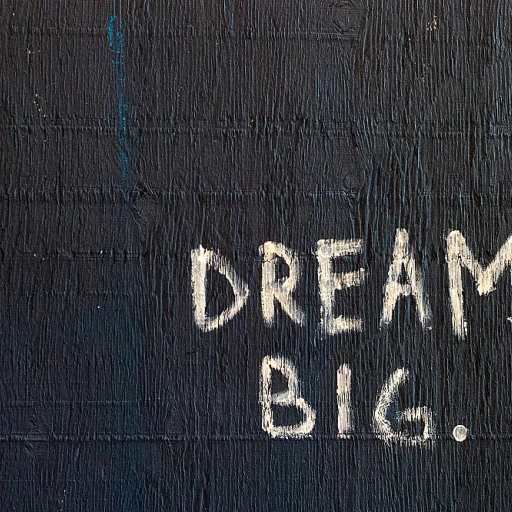Understanding the Marshmallow Challenge
The Marshmallow Challenge Overview
The Marshmallow Challenge is a thought-provoking and fun team-building exercise that is frequently used in business schools and organizational settings to foster collaboration and creativity. This activity involves teams working against the clock to construct the tallest free-standing structure using limited materials: spaghetti sticks, masking tape, string, and a single marshmallow to place on top. Participants must strategically use their resources within a time constraint, typically around 18 minutes, to build a stable, yet towering structure. The objective is to explore innovative problem-solving techniques and enhance team dynamics by testing different approaches in a hands-on environment. This challenge is not just about the physical construction. It is an insightful exercise in understanding teamwork and leadership dynamics. Participants often discover that building the tallest structure doesn't always mean success if the marshmallow top fails to stay balanced. Instead, it's about learning from mistakes and iterating quickly, which are valuable lessons in both workplace settings and personal growth. Moreover, the activity's open-ended nature allows teams various strategies to reach a solution. Some might start by constructing a solid base with their spaghetti sticks, while others may focus on the marshmallow's placement from the beginning. Each approach often reflects the unique combination of perspectives within the team and prompts reflection on their collaborative processes. Such enlightening exercises are more than just a fun break from daily tasks; they are a practical reflection of workplace challenges where team dynamics and problem-solving skills come into play. If you're seeking to boost team morale, consider integrating these kinds of activities into regular employee engagement initiatives. Boost team morale with engaging workshops to see the positive impact on productivity and collaboration.The Role of Team Dynamics
The Importance of Collaborative Efforts
Understanding the dynamics that take place during the marshmallow challenge unveils profound insights on how teamwork and collaboration can dramatically impact performance. The fundamental idea is to build the tallest free-standing structure using just spaghetti sticks, string, masking tape, and a marshmallow for the top, within an 18-minute time limit. To tackle such an activity, each team must quickly establish a clear structure to coordinate roles, responsibilities, and strategies. This exercise is not just about problem solving; it hones in on the ability of team members to communicate efficiently, adapt to evolving scenarios, and overcome creative roadblocks. By drawing on lessons learned from various business education environments, teams can be more adept in forming and executing plans. Teams that embrace diversity of thought and encourage open communication typically outperform those where ideas are siloed or dismissed. Learners from a business school context often realize that the combination of different perspectives fosters a more robust solution to any challenge. The marshmallow challenge may seem like a school yard game, yet it sheds light on essential qualities for enhancing workplace dynamics. Bridging creativity, constructive criticism, and systematic planning is a sophisticated exercise that aligns well with today's organizational objectives. Moreover, fostering an environment that supports learning through empirical experiences can significantly boost team cohesion and elevate employee morale. For those engaged in remote or hybrid work setups, these insights are pivotal. Organizations can explore these effective engagement strategies for remote teams to ensure that distance doesn't diminish collaborative spirit.Key Benefits for Employee Engagement
Unpacking the Advantages of the Marshmallow Challenge for Employee Engagement
The Marshmallow Challenge is more than just an entertaining activity; it’s a powerful tool for enhancing employee engagement. This exercise, which involves teams using spaghetti sticks, masking tape, and a single marshmallow to build the tallest free-standing structure within a set time, provides several key benefits for workplace dynamics.
- Fosters Collaboration: As teams work together to solve the problem of building a stable structure, they learn the importance of collaboration. This activity encourages open communication and the sharing of ideas, which are crucial for a cohesive team dynamic.
- Enhances Problem-Solving Skills: The challenge requires participants to think creatively and adaptively. With only 18 minutes to complete the task, teams must quickly strategize and execute their plans, honing their problem-solving abilities under pressure.
- Encourages Innovative Thinking: The simplicity of the materials—spaghetti sticks, string, and tape—forces participants to think outside the box. This can translate into more innovative approaches to challenges in the workplace.
- Builds Trust and Support: As teams navigate the challenge, they learn to trust each other's judgment and build a supportive environment. This trust is vital for effective team building and can significantly enhance employee engagement.
- Reveals Team Dynamics: The exercise provides insights into how teams function, highlighting strengths and areas for improvement. Understanding these dynamics can help managers tailor strategies to boost engagement and productivity.
Integrating the insights learned from the Marshmallow Challenge into daily work routines can lead to a more engaged and motivated workforce. By focusing on collaboration, problem-solving, and innovative thinking, organizations can create a culture that supports learning and growth.
Crafting Effective Closing Questions
Developing Impactful Closing Strategies
Crafting effective closing questions is an essential element of the Marshmallow Challenge, allowing facilitators to delve deeper into the processes and insights gathered during the activity. Here are vital aspects to consider:- Reflection on Team Dynamics: Encourage participants to reflect on how their team interacted. Did the group communicate effectively? Were roles naturally established when building the spaghetti structure with marshmallows on top? Such reflection can help teams understand the importance of dynamics and collaboration in problem-solving.
- Identifying Learning and Growth: Use closing questions to identify what was learned during the exercise. Did team members learn about the importance of strategic planning versus improvisation? Reflection can highlight how time management and creativity, explored in activities involving tape and string, impact outcomes.
- Connecting Activities to Workplace Scenarios: Linking the challenge to workplace scenarios can enhance its relevance. Crafting questions that emphasize the real-world application of teamwork, such as tackling a business school project or addressing a corporate problem, can deepen the insights gained from the exercise.
- Understanding Structural Challenges: Inquire about the difficulties faced in building structures, especially when utilizing masking tape and spaghetti sticks. Closing questions might explore the importance of a strong foundation in both physical structures and in team collaborations.
- Feedback on the Experience: Encourage open discussion about how engaging in the challenge felt. Was the time constraint of 18 minutes a significant factor? Did the creative constraints around building the tallest free-standing spaghetti structure alter strategies? Such feedback can inform future iterations of the challenge.
Examples of Closing Questions
Thought-Provoking Wrap-Up Questions to Enhance Learning
In wrapping up the marshmallow challenge, it's essential to engage participants in a reflection process that helps them articulate insights gained during the exercise. This will solidify the learning experience and promote better understanding of the dynamics at play in team activities. Consider incorporating the following types of questions into your closing discussion:- How did the initial approach to building your structure evolve as the time progressed?
- What were some of the challenges encountered? How did your team overcome them?
- Reflect on the role of communication and collaboration within your team. How did this influence your final structure?
- What strategies supported your team's problem-solving process?
- How did the time constraint impact team decision-making and execution?
- What would you do differently if given another chance to tackle the marshmallow challenge?
- In what ways did individual team members' unique skills contribute to the project?
- Which aspects of this challenge can be translated back into our workplace for improved teamwork and innovation?
- What have you learned about the importance of adaptability and flexibility in overcoming challenges?
Integrating Insights into the Workplace
Fostering a Culture of Practical Application
Putting the insights from the Marshmallow Challenge into practice within the workplace requires more than just replicating the activity. It involves embedding the challenge's principles—such as teamwork, collaboration, and problem-solving—into the everyday workflow and organizational culture.- Encourage Frequent Team Activities: Encourage periodic activities similar to the marshmallow exercise, such as building a free-standing structure using spaghetti sticks, string, masking tape, and a marshmallow top. These can be scheduled into team-building sessions to invigorate team dynamics and enhance problem-solving skills.
- Emphasize Time Management: By integrating the challenge's time-limited structure, where teams have minutes to complete the task, employees can learn to work efficiently under time constraints. This can mimic real-world scenarios where deadlines are tight but shared, collaborative efforts are essential.
- Implement Learned Skills in Projects: Encourage teams to apply the skills learned from the challenge, such as collaboration and strategic planning, to their daily tasks and projects. This ensures a seamless integration of improved group dynamics into the workplace environment.
- Focus on Presentation Skills: Use the challenge as a platform to enhance presentation skills by having employees present their solutions to their peers. This can help in building confidence and improving communication within teams.
- Reflect and Iterate: Post-activity, facilitate discussions that reflect on the process, what was learned, and how these lessons can be applied to current and future work challenges. This reflective practice encourages continuous improvement and adaptability in problem-solving approaches.








